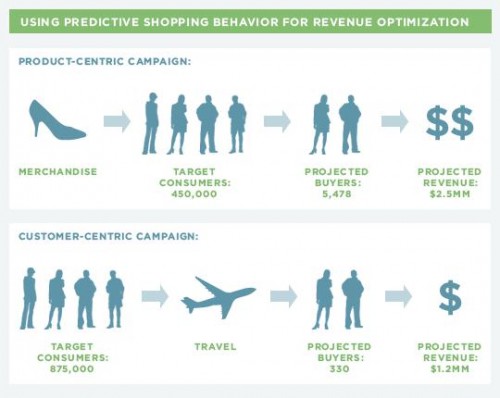A lot of people aren’t aware of what behavioral targeting is, although it has been around for several years now. It’s a bit of a surprise how many still haven’t heard of this technique, because it has caused quite the stir in the online word, and most especially in the web analytics field. But what exactly is it?
Behavioral targeting is a technique that many website administrators and publishers use to make their online campaigns more effective. It is often applied by running certain applications and installing programs onto the server so that every site visitor will be able to get a personalized and customized experience automatically.

How Does Behavioral Targeting Work?
The definition above might seem a bit vague, so to illustrate the point better, let’s take a look at a prominent website as an example. The world’s leading search engine is currently Google, but the company has since expanded their reach and interests. One of these is Gmail, a free email service that “pays for itself,” so to speak, by the ads that Google displays as the user is checking, reading, or sending some emails. You might have noticed that some of the ads being displayed are related in topic or theme to the sites that you’ve visited prior to checking Gmail. Some ads might even be related to the subject or actual content of the email message itself.
That, in a nutshell, is the main gist of behavioral targeting: information such as your previous searches or surfing history is collected and used to display relevant information. In the case of Gmail and Google’s other services, related advertisements are displayed to the user.

Benefits of Behavioral Targeting for the Publisher
Obviously, no online publisher (especially one as big as Google) would choose to use a technique that is ineffective. In fact, other leading sites from various niches such as Amazon, Yahoo, eBay, and Facebook all make use of behavioral targeting.
The main goal of online publishers is to have a wide audience, maintain a huge reach to the vast number of users of the internet, and provide their users with the best experience possible. The reason is obvious: why would anyone choose to run a site that receives few, if any, daily visits? It costs money to run a site and keep it updated with fresh content. Given that there are currently billions of sites on the World Wide Web, it pays to have an edge.
When users visit a site that has been optimized where behavioral targeting is applied, he or she can expect to have a richer site experience because behavioral targeting allows the publisher to serve up relevant articles and content, specific to that user.
Aside from this, it also allows online publishers to serve relevant advertisements to users. Behavioral targeting increases the potential for conversions, as site visitors are more likely to click on ads that either grab their attention or interest them.
Benefits of Behavioral Targeting for Online Retailers
One reason why online stores and retailers are fans of this technique is because it lets them push related products and goods that will appeal to the shopper, even though it might not be what the user was looking to buy when visiting the site.
Online retailers also use the browsing history of a user while on their site. This allows them to provide recommendations and a list of related products or services that might be what the shopper is looking for. This might lead to more sales, and we all know that more sales equal higher revenues and profits.
Benefits of Behavioral Targeting for the User
Most users are strapped for time and only go online to catch up on the latest news or read some articles in between breaks from work or at night before going to bed. Site visitors will obviously appreciate it when they are greeted with content that jive with their interests. This saves the user time and provides the visitor with a richer experience.
For example, when you reach your personalized homepage on Yahoo!, you will be greeted with news articles and editorials that are customized to match or fit your interests. You have the option to stick with the recommendations made by the site, or change the settings so that the content that is displayed is exactly what you’re looking for.
Behavioral targeting can expand the reach of websites, which makes it extremely useful for online publishers and website owners. It also benefits users and advertisers in the process. When properly implemented and optimized, it can serve to benefit all three parties, hitting multiple targets with one stone.
Blake Sanders is a writer for Maxymiser and an expert on behavioral targeting. Blake enjoys discussing various topics on increasing website conversions.












Add Comment